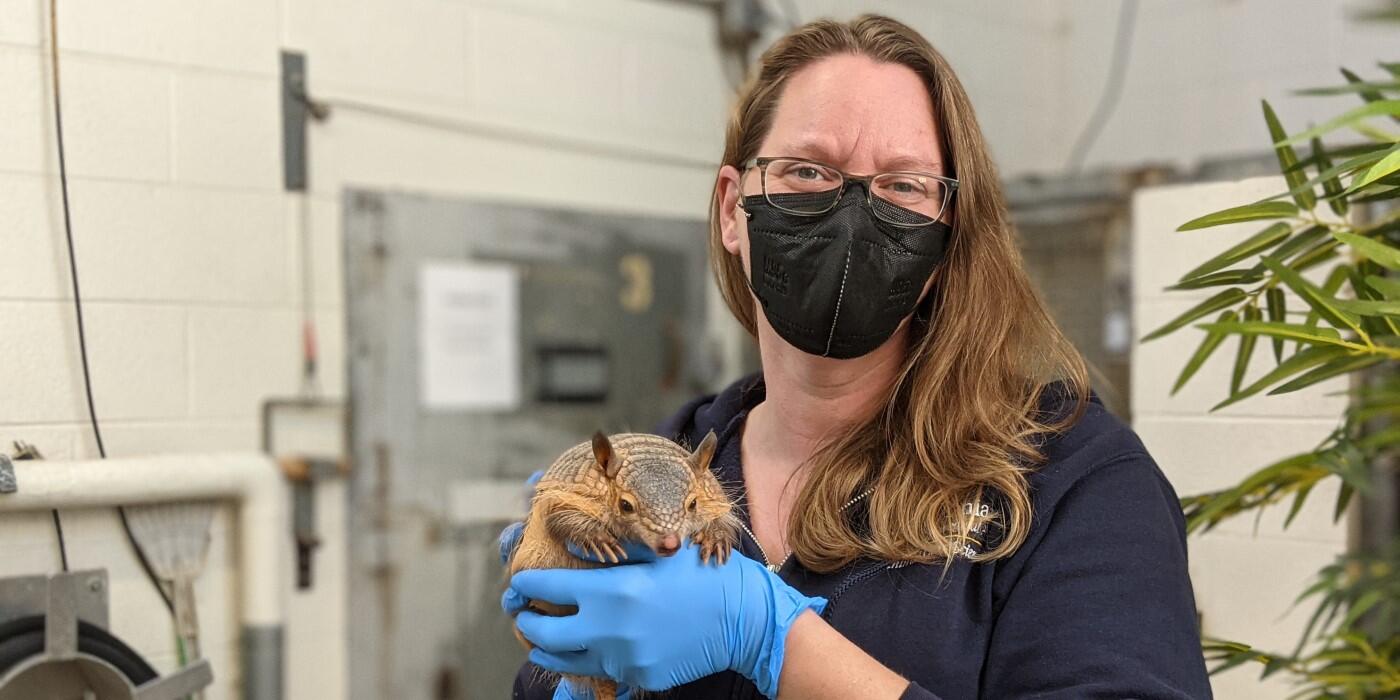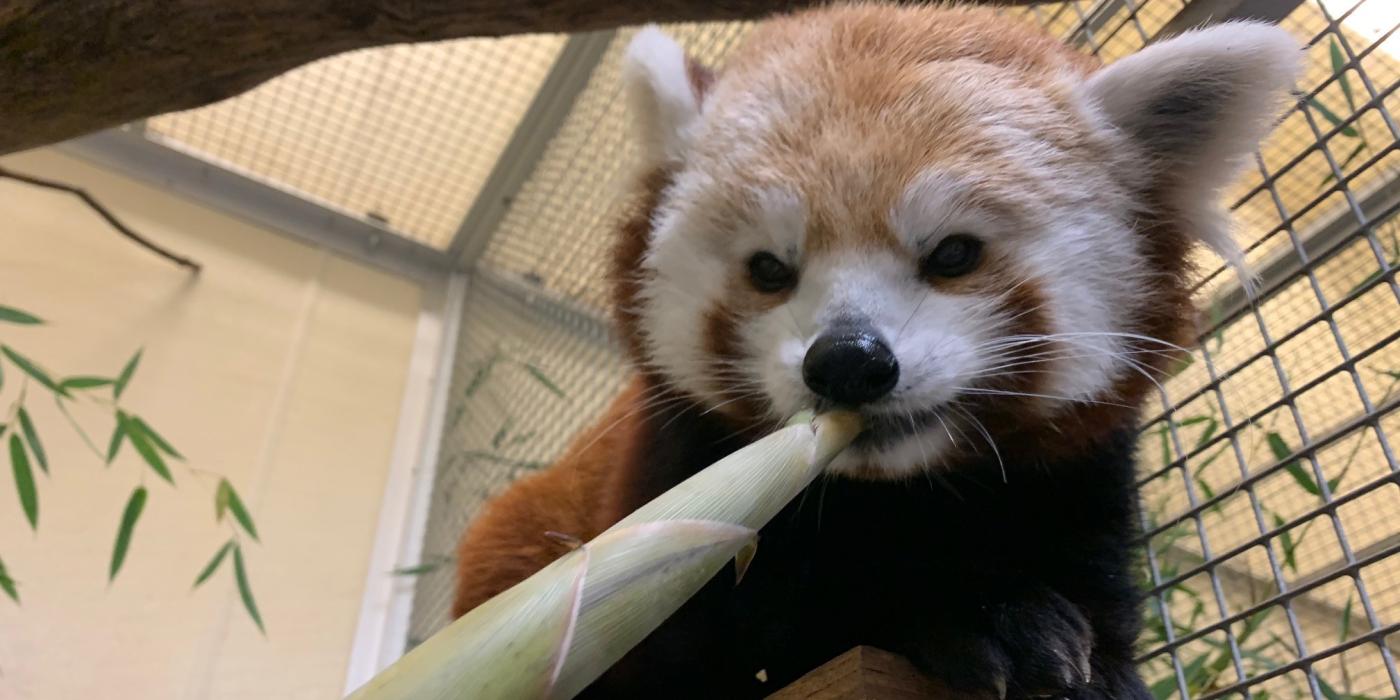How to Care for Sloths
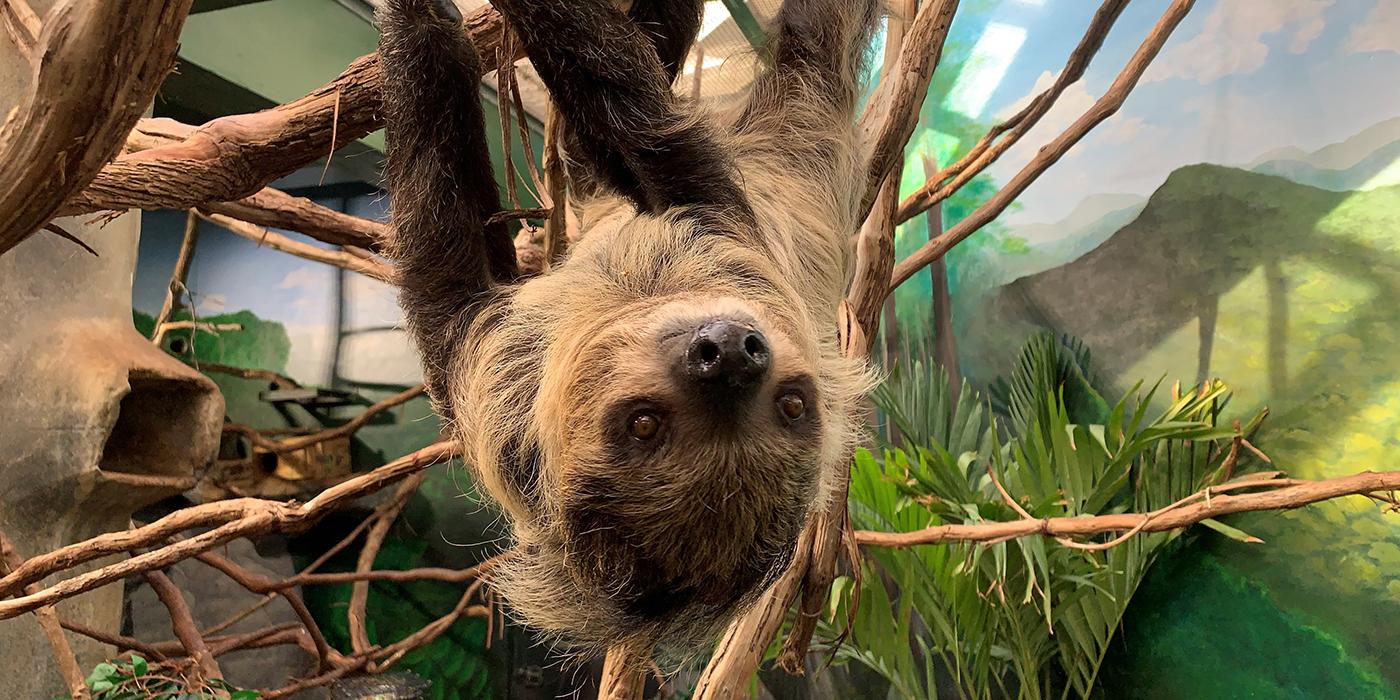
Slow down with Smithsonian’s National Zoo’s three southern two-toed sloths. Keeper Kara Ingraham works with Athena and Vlad in the Small Mammal House, and keeper Denny Charlton tends to Howie in Amazonia. Find out what it takes to care for these unique animals!
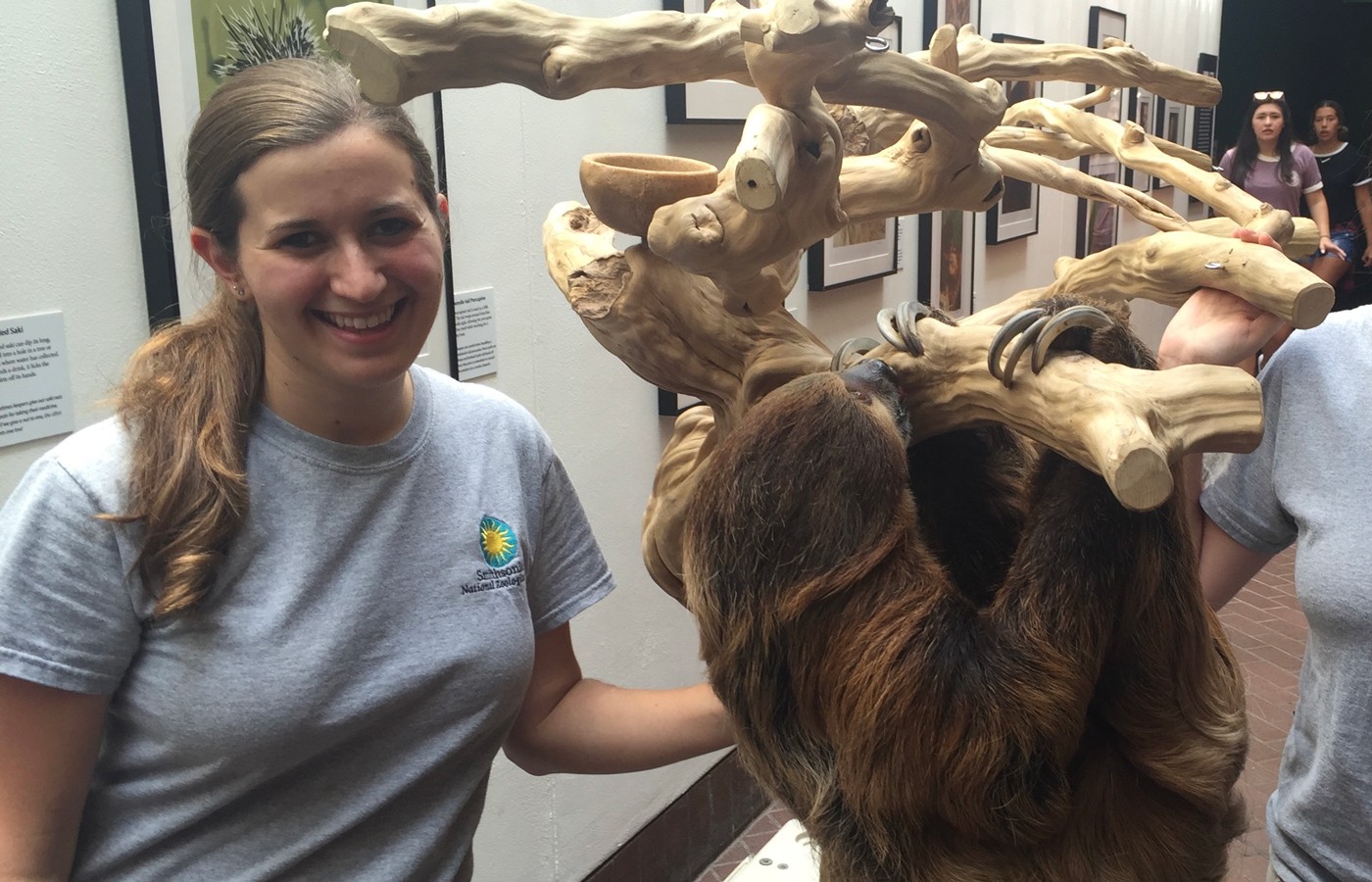
Kara: I have always loved animals and grew up dreaming of saving the rainforest. I feel very lucky to have observed sloths in the wild, and to work with them every day at Small Mammal House.
For an animal that sleeps more than 20 hours a day, they still require a lot of care—especially since our sloths live in mixed-species habitats! Our 34-year-old male sloth, Vlad, and 3-year-old female, Athena, share an exhibit with golden lion tamarins and a green Aracari.
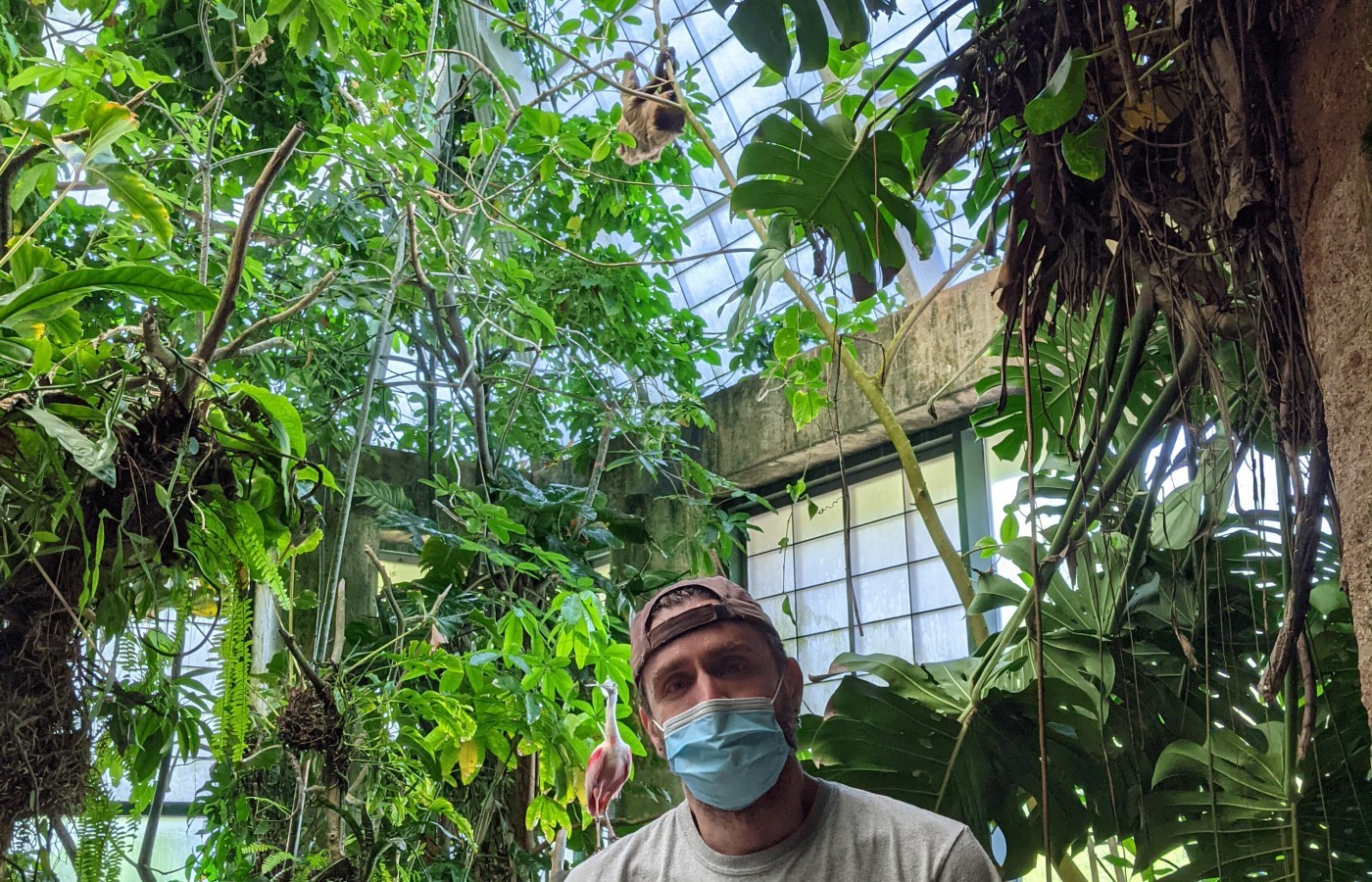
Denny: Amazonia is unique in the world of zoo exhibits. I’ve been to the Amazon forest. Amazonia mimics it astonishingly. You really feel like you are immersed in this little slice of nature. Every single animal and plant in the habitat are strictly from the Amazon. The titi monkeys, emperor tamarins and various bird species are all animals a sloth could encounter in the wild.
The forest setting allows Howie, our 10-year-old sloth, to live similarly to how he would in the wild. He can go wherever he wants in the exhibit. Sloths spend much of their lives up in the trees. Howie tends to hang out up high. If chooses to come down to get food or check out anything we left for him, it’s usually at night. Every now and then, he will come down during the day—a truly magical experience for anyone visiting.
When you walk into Amazonia, you will feel the difference in temperature and humidity no matter the season. While D.C. gets humid, it is not as wet as a sloth needs to keep their skin from becoming dry. We keep Amazonia warm and very humid all year long.
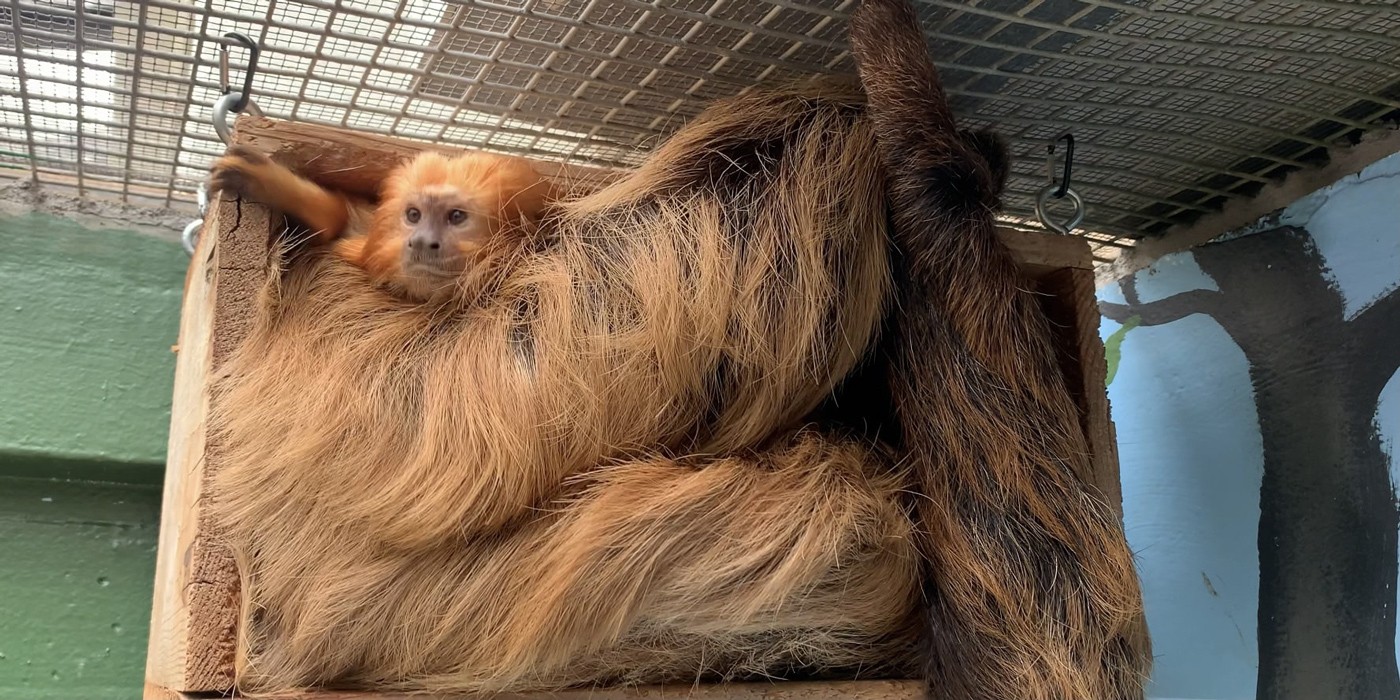
Kara: Athena and Vlad will wake up and move around when there is heavy rain and thunderstorms outside; they appear to be looking for a shower. We sometimes leave a hose on “mist” in the Small Mammal House enclosure to mimic the rain sloths would experience in their natural habitats.
Mist also acts as a form of enrichment! Enrichment is anything we add to their environment to encourage natural behaviors. Sloths spend most of their awake time moving from branch to branch, snacking on leaves. A new branch or change in the pathways give Athena and Vlad a new way to explore their exhibit.
In the wild, sloths sleep in tree cavities or in the nook of branches. Vlad and Athena always have access to nestboxes, crates and hammocks with bedding material to sleep in. Both seem to prefer the darkest and highest spots!
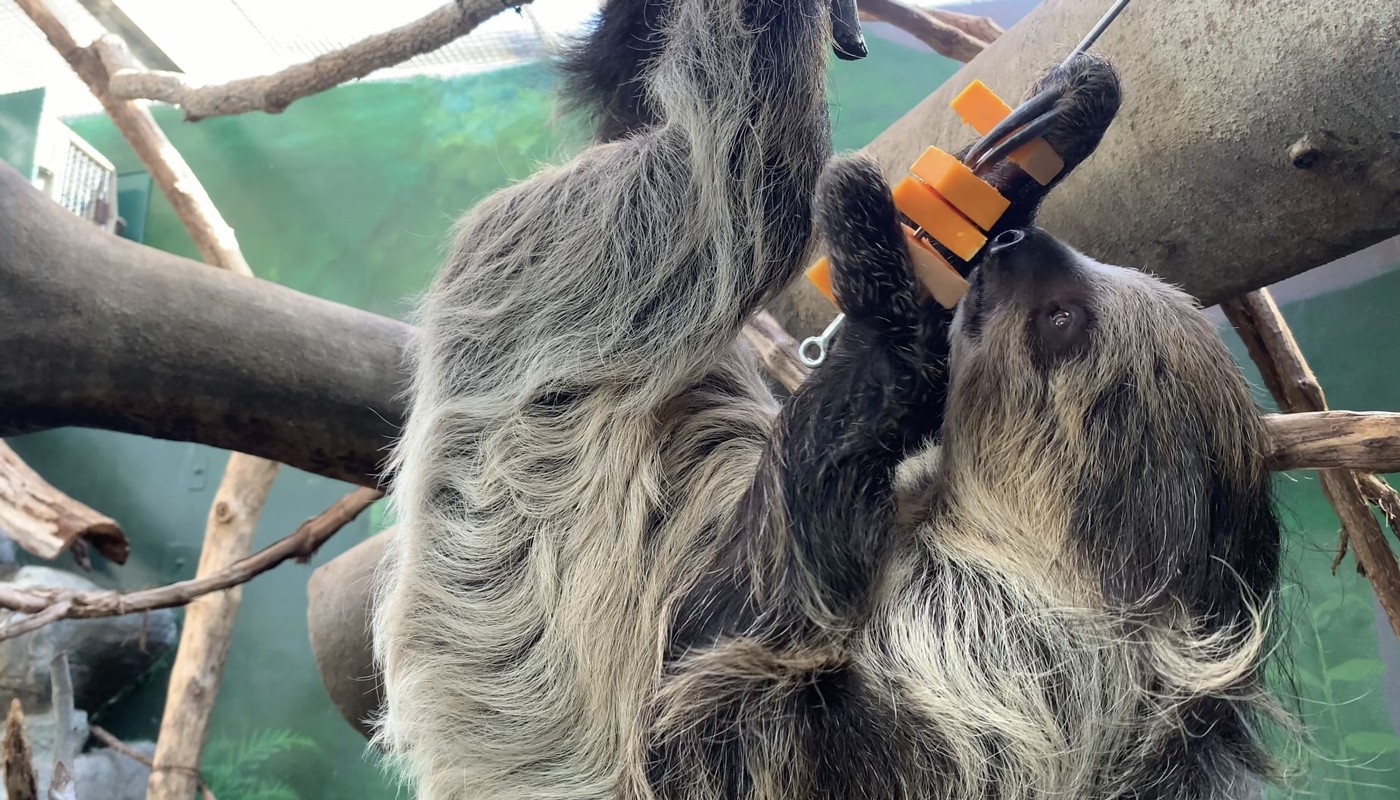
Kara: In a mixed species exhibit, keepers have to work extra hard to ensure each animal gets the diet we have prepared for them. Luckily, the sloth diet—which is mostly vegetables— is not as appealing to the golden lion tamarins. The monkeys will occasionally taste Vlad and Athena’s food before dropping it on the floor—out of the sloths’ reach!
We hand-feed the tastiest food items to Athena and Vlad during training sessions. Vlad seems to enjoy cooked sweet potato and beet the most. Athena appears to love kale and squash! Training sessions allow us to get an up close view of each animal every day. We check their teeth, movement and behavior. It’s also a great opportunity for visitors to see the sloths moving and active since they sleep much of the day.
Denny: Howie prefers to eat the leaves from certain trees in Amazonia, especially when they are sprouting new leaves. Since the habitat mimics a real rainforest so well, the trees flower and grow just like they do in the wild. Howie’s favorite seems to be the Mahogany tree, which is located near the stairs.
Since Howie prefers to spend much of his time in the tree canopy, we don’t see him every day. On some days, he will be visible in the trees. On others, he disappears into the tree canopy and only comes down at night. We know where his favorite hangout and sleeping spots are and take copious notes of where we last saw him and when. We also look for traces of his movements—like feces or an empty food pan.
Howie receives a full exam every year and is trained to voluntarily enter a large enclosure. Even though he has the whole rainforest to roam, Howie will come down from the treetops willingly to eat his favorite foods. During his recent exam in May, he weighed in at 15.5 pounds (7.2 kilograms)!
Howie is large for his species. You may be surprised to learn that most of a sloth’s muscle mass is in its arms. In general, sloths weigh between 10 and 15 pounds, enabling them to move around the trees easily and not expend as much energy.
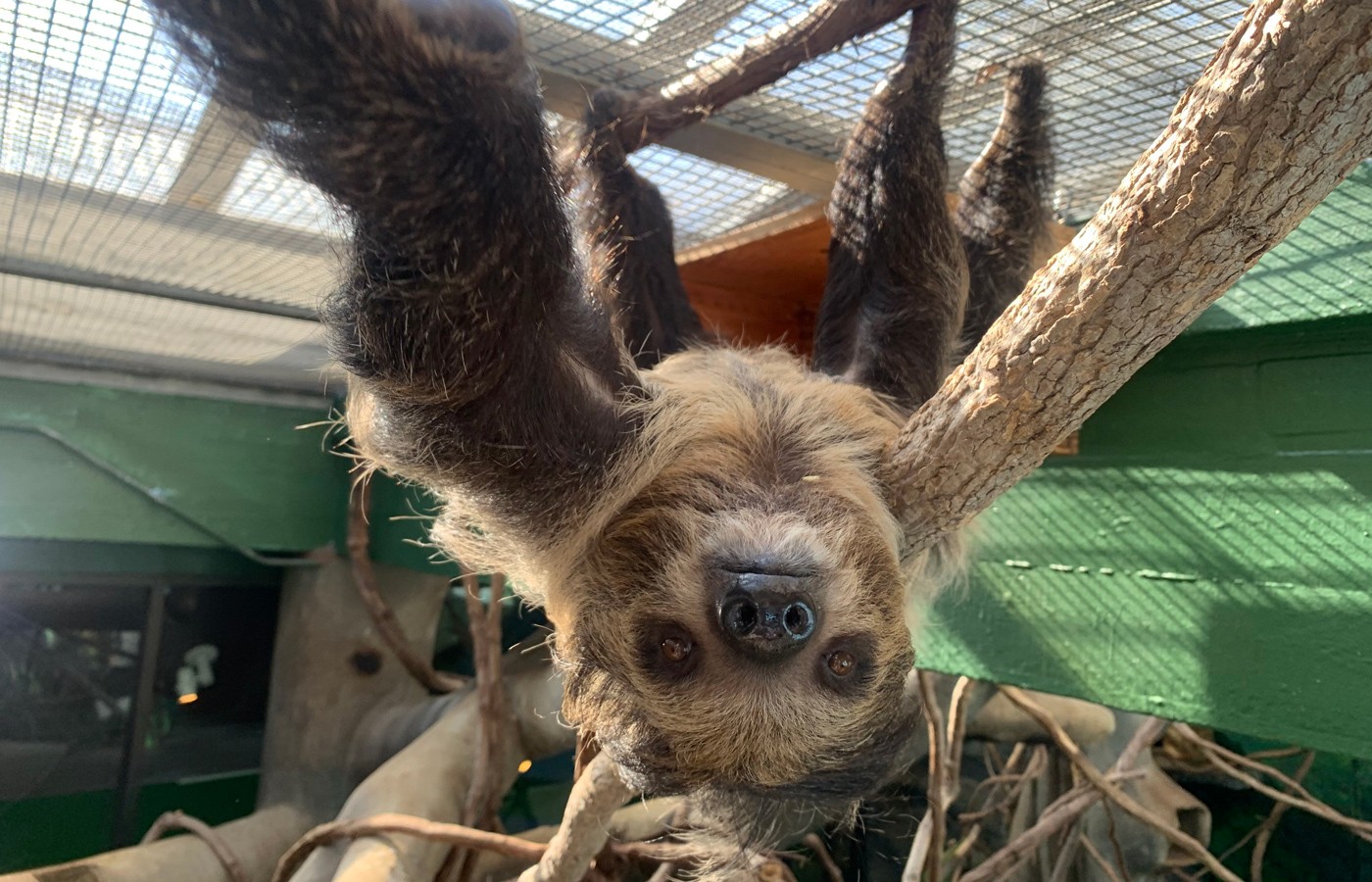
Kara: People think of sloths as always moving in slow motion, but they can move quickly when they want to! Athena, for example, often sneaks up on us while we’re cleaning and tries to grab the hose! She also enjoys knocking over big plants and climbing down to the floor to eat the roots.
Although a sloth’s diet is comprised almost entirely of leaves in the wild, their digestive system isn’t very efficient at breaking down tough plant fibers. This means the nutrition they get from their food is limited. To compensate, they move slowly and spend most of their time resting—that is where they get the reputation for being “lazy!”
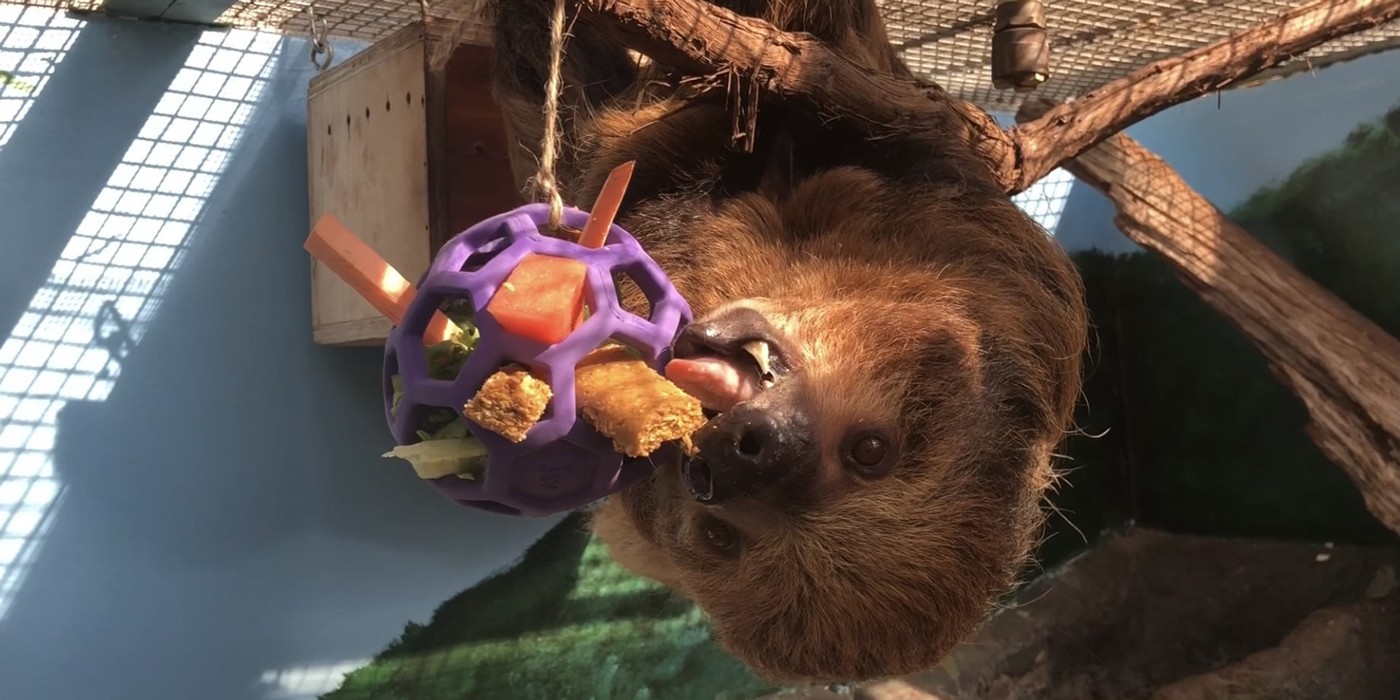
Kara: Sloths have captured the hearts of many people, and rightfully so! They are such unique and interesting animals. The downside of this popularity is the rising threat of the illegal pet trade. Because of their slow and docile nature, sloths are easy to grab out of trees and sell as pets. This is damaging to their populations in the wild. Not to mention sloths need specific foods, environments and enrichment, which makes caring for them a round-the-clock job.
Sloths, like other wild animals, do not make good pets. Make sure you do your research before bringing an animal home.
Denny: For anyone interested in working with sloths, my best advice is to spend time watching them. Since sloths sleep most of the day, videos are a great way to observe their behavior and learn about them. Also, visit zoos that care for sloths! Many zoos have animal ambassador sloths, which keepers can bring out for up-close encounters with visitors.
Kara: We are extremely fortunate as keepers to be able to form bonds with our animals, get to know their personalities and quirks, and take care of some of the coolest animals on the planet!
Slow down and check out the Zoo's southern two-toed sloths in the Small Mammal House and Amazonia when you plan your visit today!
Related Species:

